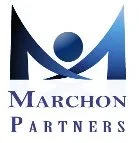
Best Practices Managing Remote Teams with Contingent Staff
In Part 1 of our series on remote work, we explored how and why the work-from-home shift is here to stay—for permanent and contingent employees alike. In Part 2, we highlight important ways to manage remote teams as part of a longer-term employment model.
Traditionally, in-person management practices ensure that employees—temporary and permanent—are fulfilling job commitments. Remote working had been reserved for specific workplace cultures or job types and rarely considered for contingent employees. In Part 1 of our series, we reported that, on average, only 2% of temporary staff worked from home prior to 2020.
During 2020, many companies built their work-from-home model in crisis-management mode. But for managing remote employees post-pandemic, a permanent solution should be in place. Here are several best practices for managing a remote workforce that includes contingent employees.
Set Clear Team Expectations
Setting clear, upfront expectations in management is universally important. However, in an office, it’s easy to become a little lax. Impromptu water cooler conversations or a stroll around the cubicles can quickly inform a leader if work assignments are on track.
Managing a remote workforce, leaders miss the informal interaction, and as a result, may question team productivity and work progress. When employees are temporary and without a company track record, the concern can increase.
Staffing Industry Analysts (SIA) surveyed staffing executives on managing remote contingent workers in 2020. A key recommendation? Establish a Remote Working Policy that can be signed by both the employees and manger. This policy can include expected hours of work, guidelines for breaks, communications requirements, workstation standards and more. Managers can utilize this agreement, in addition to other legal work contracts, to structure work process and keep the team in sync.
Manage Remote Employees to Relevant Metrics
As a complement to a Remote Working Policy, metrics can help objectively gauge remote employee success. The right metrics can provide an early warning system for managers; a potential alternative for monitoring work in-person.
For a contingent worker, metrics can serve a greater cultural and team-building purpose by linking his/her performance with the broader team and organization. As a motivational tool, though, buy-in is key. According to SIA, “Choose metrics that measure contribution, that are achievable, and that staff actually respect.”
Use project management metrics for remote project-based staff. Manage milestone dates closely for technology implementation teams to avoid surprises and stay on course for delivery dates. These practices are helpful in all situations, but especially when teams work apart.
Communicate Frequently
One of the downfalls of remote work can be isolation—feeling disconnected from the team as well as the organizational culture. For a contingent employee, without experience being in the office or having a company network, the risk is even greater.
Structured check-ins go a long way toward maintaining strong group dynamics and accomplishing shared goals. Set a cadence, whether it’s daily or weekly, so that staff can count on it. Managers should prepare an agenda and include employees. However, managers should also leave time for conversation and catching up. Keeping the personal connection is important. And while conference calls are sufficient, video is also helpful for relationship building.
Just like the open-door policy on site, remote employees need to know that managers have an open-phone (text, email, etc.) policy as well. In turn, managers should proactively reach out to employees to create informal opportunities for discussion and potential coaching. Managing a remote workforce requires more intentional communication, but we’ve seen this investment directly translate to team success.
Leverage the Right Tools and Technology
To aid in communication, there are a wide variety of collaboration tools for remote teams. Just a few examples include: Slack for instant messaging and sharing files; Asana for managing projects; and Google Docs for editing and version control. Providing these tools equally to contingent employees will help to ensure maximum value across work teams.
Of course, without proper technology and access to company systems, remote work isn’t possible for any employee. This was the first hurdle to clear when the pandemic started, and at this point, may be well established. However, for a longer-term work-from-home strategy, it may warrant taking another look at connection speeds, cloud security, and such.
Long-term remote working practices require employees have appropriate home workspaces. This may warrant a small stipend to help fund hardware purchases or supplies. For new employees, to include contingent workers, making a list of required workstation items is a smart and simple tactic during onboarding. Effectively managing a remote workforce means confirming they have the right work environment at home.
Do you need help managing your remote contingent workforce? Turn to Marchon Partners for MSP and project management expertise. Contact us today for a free evaluation.
Tags: Best practices, Managing remote employees, Managing remote teams, Managing remote workforce